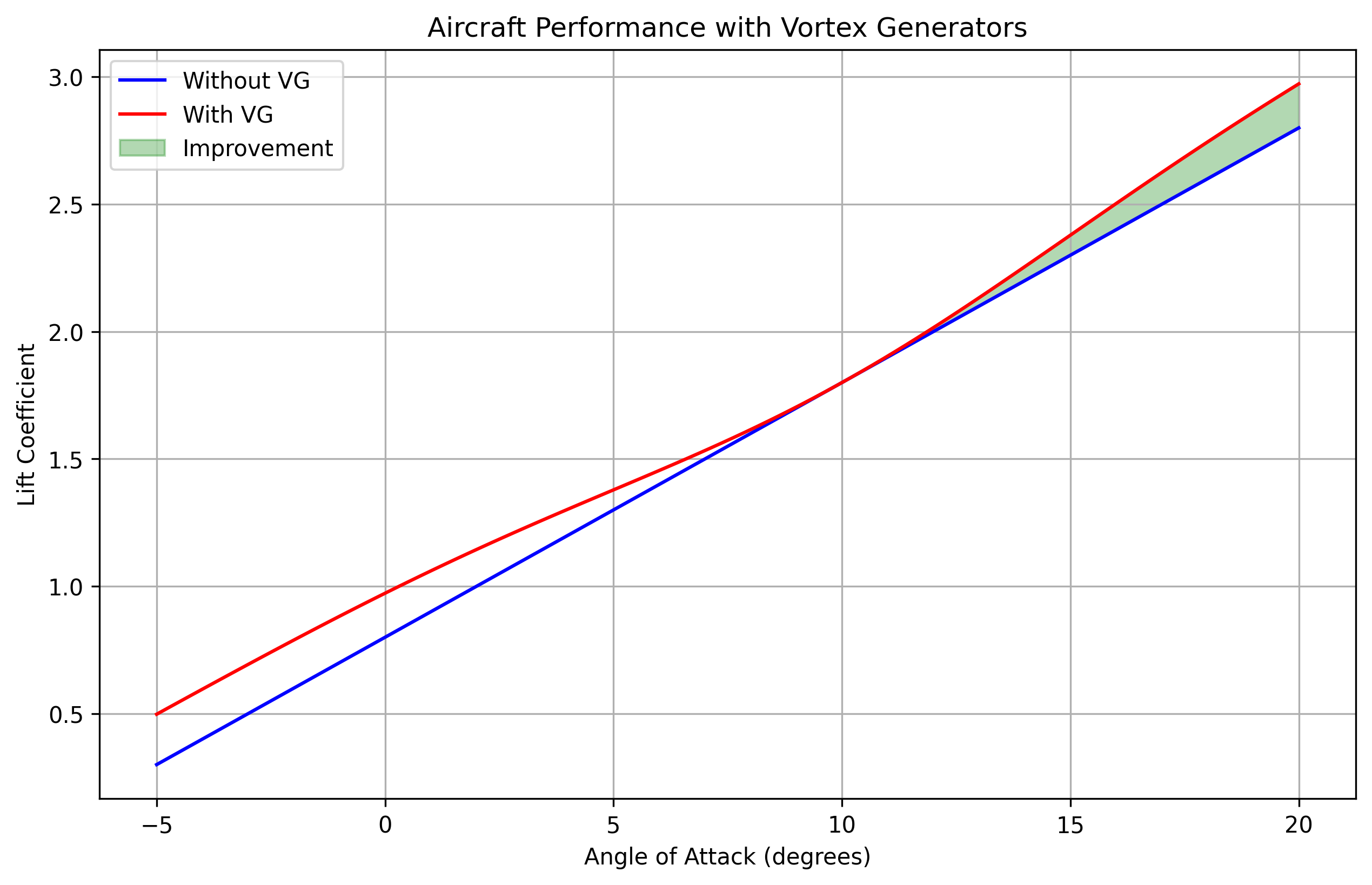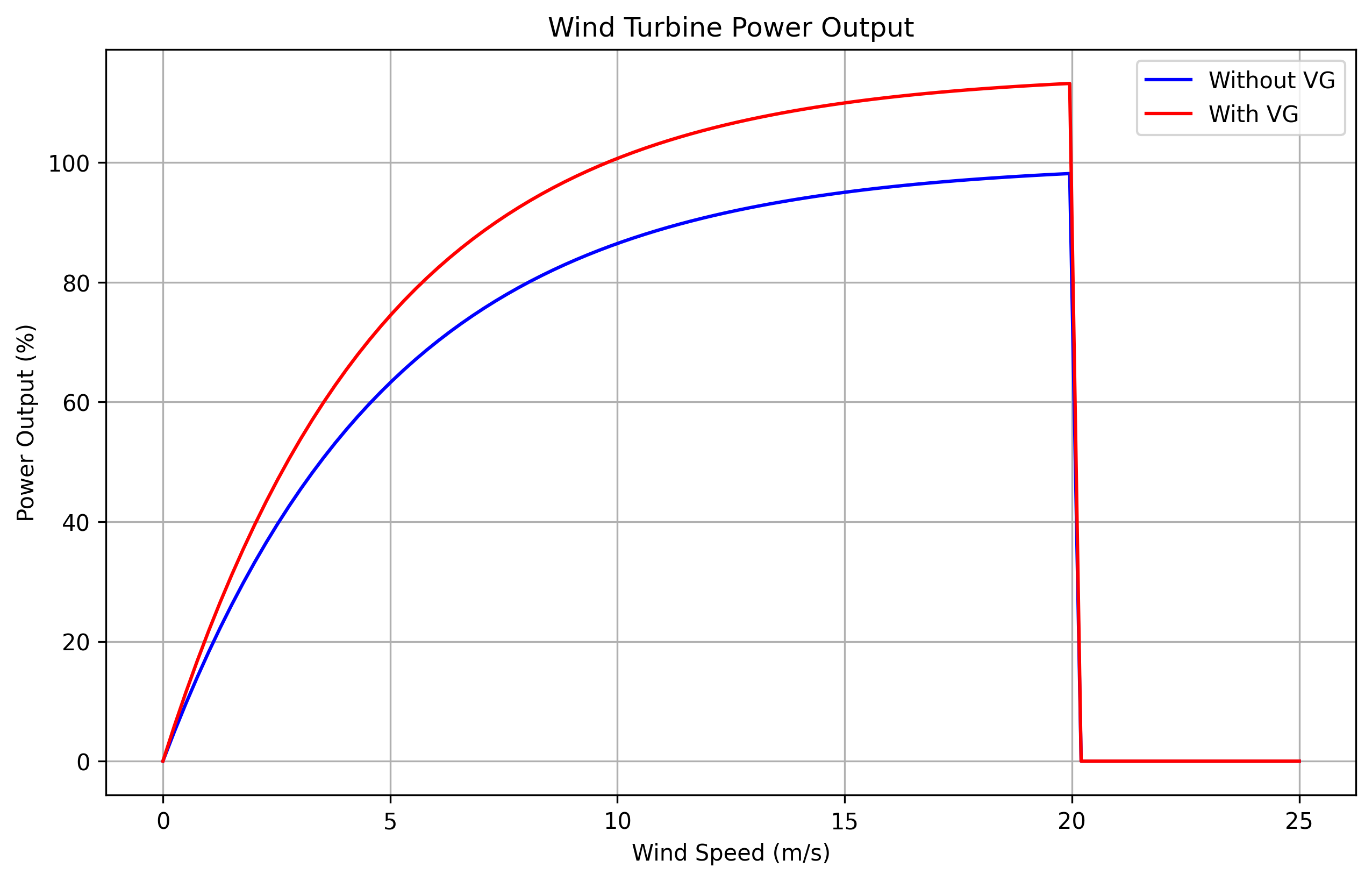Applications of Vortex Generators
Aviation Applications
In aviation, vortex generators play a crucial role in improving aircraft performance across various flight regimes. Their implementation has become standard practice in both commercial and military aircraft.

Figure 1: Impact of vortex generators on aircraft lift coefficient vs. angle of attack
Key Benefits in Aviation
Performance Improvements
- Stall speed reduction: 5-10%
- Maximum lift increase: 10-15%
- Control surface effectiveness: +20-30%
- Drag reduction at high lift: 5-8%
Operational Advantages
- Enhanced low-speed handling
- Improved stability in crosswinds
- Better control authority
- Reduced buffet onset
ΔVstall = f(CL,max) ≈ -0.3 × √(ΔCL,max)
Relationship between stall speed reduction and maximum lift coefficient improvement
Relationship between stall speed reduction and maximum lift coefficient improvement
Wind Turbine Technology

Figure 2: Wind turbine power output comparison with and without vortex generators
| Parameter | Without VGs | With VGs | Improvement |
|---|---|---|---|
| Annual Energy Production | Baseline | +3-8% | Site-dependent |
| Cut-in Wind Speed | 4-5 m/s | 3.5-4.5 m/s | ~10% |
| Peak Power Output | Rated Power | +2-5% | Design-dependent |
Implementation Considerations
- Optimal placement: 20-30% chord from leading edge
- Spanwise coverage: 70-85% of blade radius
- Installation angle: 15-20 degrees to local flow
- Height: 0.6-1.0 times local boundary layer thickness
Automotive Applications
Performance Vehicles
- Increased downforce: 10-15%
- Reduced drag coefficient: 2-5%
- Better stability at high speeds
- Improved cooling efficiency
Commercial Vehicles
- Fuel consumption reduction: 2-4%
- Enhanced trailer stability
- Reduced spray in wet conditions
- Better crosswind handling
CD,reduction = 0.04 × (h/δ) × sin(2β)
Empirical correlation for drag reduction in automotive applications
Empirical correlation for drag reduction in automotive applications
HVAC Applications
| Application Area | Primary Benefit | Efficiency Gain |
|---|---|---|
| Heat Exchangers | Enhanced heat transfer | 15-25% |
| Air Handling Units | Improved mixing | 10-20% |
| Cooling Towers | Better air distribution | 8-15% |
Design Considerations for HVAC
- Pressure drop penalty: typically 5-10%
- Maintenance requirements: annual cleaning
- Material selection: corrosion-resistant
- Installation location: upstream of heat transfer surfaces
References
- Smith, F.T., et al., "Vortex generators in aircraft aerodynamics," Annual Review of Fluid Mechanics, Vol. 45, 2013, pp. 79-98.
- Mueller-Vahl, H., et al., "Vortex generators for wind turbine blades: A combined wind tunnel and wind turbine parametric study," Wind Energy, Vol. 19, No. 11, 2016, pp. 2071-2087.
- Johnson, J.P., "The effects of vortex generator configuration on heat transfer enhancement," International Journal of Heat and Mass Transfer, Vol. 54, No. 15-16, 2011, pp. 3392-3404.
- Zhang, X., "Vehicle aerodynamics and vortex generators: A computational study," SAE Technical Paper 2020-01-0676, 2020.